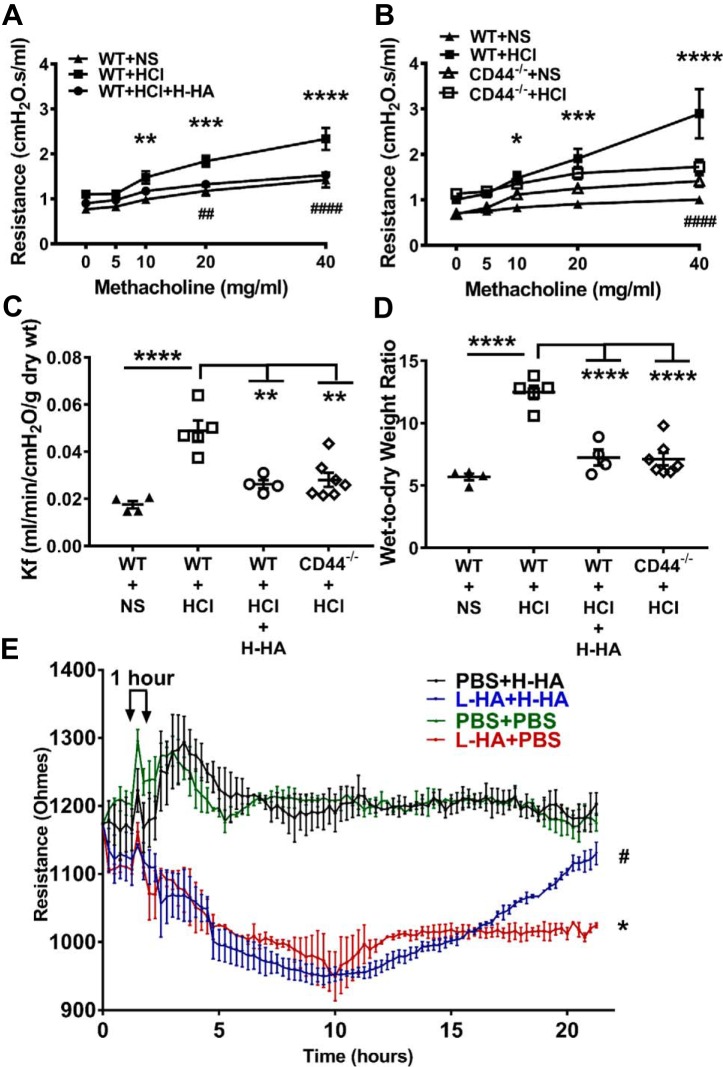Fig. 4.
Beneficial effects of H-HA following HCl injury in vivo and in vitro. A: airway resistance prior and following methacholine challenge measured by FlexiVent at 24 h in WT C57BL/6 (40) mice after NS, HCl instillation or H-HA treatment post-HCl exposure (means ± SE; n = 5 for NS and n = 6 for HCl or HCl + H-HA group). B: airway resistance prior and following methacholine challenge in WT and CD44−/− mice 24 h after NS or HCl instillation (means ± SE; n = 5 for WT + NS and n = 6 for WT + HCl; n = 4 for CD44−/− + NS and n = 8 for CD44−/− + HCl group). *P < 0.05; **P < 0.01; ***P < 0.001; ****P < 0.0001, WT + HCl compared with corresponding WT + NS control at the same dose of methacholine. ##P < 0.01; ####P < 0.0001, WT + HCl compared with corresponding WT + HCl + H-HA or CD44−/− + HCl at the same dose of methacholine. Data for each dose point were analyzed with one-way ANOVA followed by Bonferroni post hoc comparisons. C: pulmonary filtration coefficients (Kf), measured ex vivo in isolated perfused heart-lung preparations, increased significantly at 24 h after HCl instillation in WT mice; H-HA treatment resulted in normal Kf values; Instillation of HCl in CD44−/− mice did not increase Kf. D: wet-to-dry weigh ratio also significantly increased at 24 h post-HCl exposure in WT but not in CD44−/− mice; the increase of wet-to-dry weight ratio in WT mice was alleviated by H-HA treatment. Each dot represents a different mouse; means ± SE. **P < 0.01; ****P < 0.0001, compared with WT + HCl by one-way ANOVA followed by Bonferroni post hoc comparisons; n = 4–7 for each group. E: electrical resistance values (RT) of confluent primary human bronchial epithelial cell monolayers seeded on Electric Cell-Substrate Impedance Sensing System (ECSIS) arrays before and L-HA or PBS (5) followed H-HA or PBS (5). Notice significant drop in RT in L-HA-treated monolayers and recovery after H-HA. Values are means ± SE. *P < 0.05, L-HA + PBS compared with PBS + PBS; #P < 0.05, L-HA + PBS compared with L-HA + H-HA by one-way ANOVA followed by Bonferroni post hoc comparisons. The experiments were repeated for 3 times and each group had 4 wells on the (ECSIS) array for each experiment.

